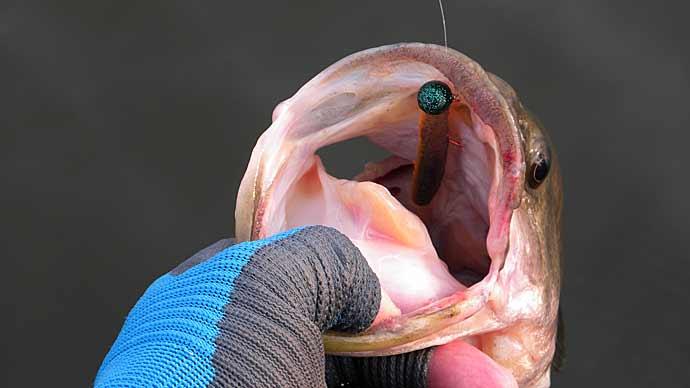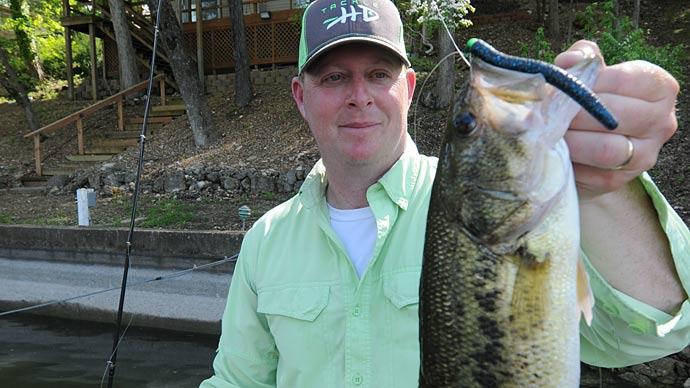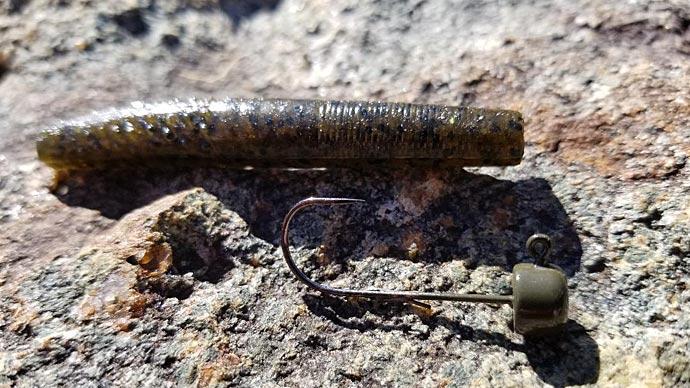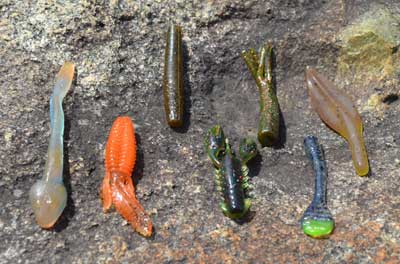
The Ned Rig’s hallmark is simplicity. Jig head and stubby worm form an effective finesse presentation for largemouth, smallmouth, and spotted bass, almost anywhere they swim. But even with a simple presentation, there are details to consider.
Beyond the jig head's color, shape, and weight, the most significant decision you'll make in building a Ned Rig is the soft-plastic bait you thread on the hook. A short worm sporting a thick body and tapered tail is the choice of purists. Plenty are poured specifically for Ned Rigs, though the relatively untouched back halves of stick worms slaughtered on wacky-rigs are often recycled, finding a second life on Ned Rigs.
These worms are effective because they contribute to the subtle profile and action that make Ned Rigs effective. But they aren’t your only choice. The best soft-plastic baits for Ned Rigs share three traits. First, they’re compact, usually 4-inches or less. But that doesn't mean they have to be skinny. On the contrary, a little bulk adds to their natural profile, which is the second characteristic they share.
Ned Rig baits should create action from up and down movement. The typical presentation includes dragging and shaking along the bottom, maybe with a hop here and there. It’s slow work without much forward progress. So, baits that require horizontal movement to create action, such as a curly tail grub, swimbait or flapping craw, aren’t as effective as those with a flat underside or tapered tail in this situation.
Even with those stipulations, many soft-plastic baits fit the bill when assembling a Ned Rig. Here are four.
Hybrid Worm
Image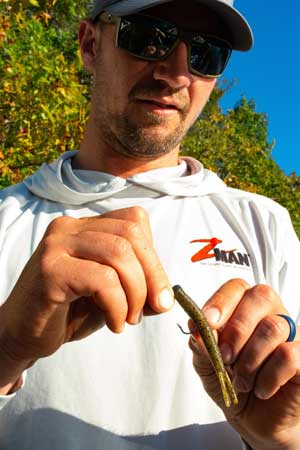
Bassmaster Elite Series angler Jeff Gustafson fishes a Ned Rig at home in Canada and is on the road for tournaments. He almost exclusively rigs it with Z-Man’s Hula StickZ. He finds it easier to rig straight, helping him drop it directly on bass and cover that he sees on his forward-facing sonar. Photo by Pete M. Anderson Bassmaster Elite Series angler Jeff Gustafson is well-versed in the art of fishing a Ned Rig. "Every day I am home in summer, that's what I catch half my fish on," Gustafson said. And he doesn’t leave it in western Ontario when he goes on the road, competing at tournament venues across the United States. "It's the best-spotted bass bait I've ever seen," Gustafson said. "I was at Lake Lanier for a few days [in late February], and it always shines there, too.”
But the soft-plastic bait that Gustafson prefers almost exclusively for his Ned Rig isn’t a stubby worm. “I don’t even have a [Z-man] Finesse TRD in my boat,” he said. “All I use is the Hula StickZ.” It resembles a 4-inch stick worm with a few shortened tentacles from a tube bait stuck to one end. “I have caught so many bass on that over the past few years,” he said. “Green pumpkin — those guys [at Z-Man] probably can’t make enough to keep me loaded all summer.”
The Hula StickZ is long for a Ned Rig bait. However, Gustafson sees that as a positive. It's easy to rig perfectly straight, ensuring it sinks directly to a target. “I’m using [Humminbird forward-facing sonar] MEGA live, so I want that bait to fall next to a bass, boulder, or piece of brush that I see,” he said.
Craw
Ned Rigs take advantage of a bass’s inability to turn its nose up at a simple and subtle snack. Most live along the bottom of lakes, rivers, and reservoirs. So, it only makes sense that the more natural-looking a bait’s profile, the more bites it will generate.
Image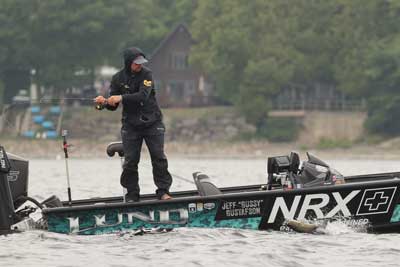
Bassmaster Elite Series angler Jeff Gustafson prefers a medium-light power and fast-action spinning rod for fishing Ned Rigs. Its 6-foot, 8-inch length means it’s at home casting or fishing vertically. Photo courtesy of B.A.S.S. / Seigo Saito When it comes to feeding on the bottom, at least outside the Great Lakes, bass are mostly munching on crawfish. There are many small soft-plastic crawfish that are perfect for a Ned Rig. Gustafson points to Z-Man’s TRD CrawZ as an example. It’s 2 1/2 inches long and sports floating craws, twitching with every movement.
While matching the hatch is essential when fishing in clear water, crawfish imitators also are effective in stained water. Gustafson said their relatively larger profile gives the bass a bigger target, making them easier to find. A small creature-style bait, such as Z-Man’s TRD BugZ, would be a good choice.
Goby
After hitching rides on ocean-going ships leaving Europe, gobies were released in the Great Lakes with ballast water exchange. That first happened more than 30 years ago. Since then, a steady diet of gobies has caused the average size of smallmouth to skyrocket. Erie, Huron, St. Clair, Ontario, and the St. Lawrence River are home to these bruisers, and they only seem to get bigger every year.
Most gobies are found along the bottom. Soft-plastic baits that mimic them are a natural fit for Ned Rigs. These baits, such as Poor Boys’ Goby and Netbait’s The Drifter, bring other essential attributes. They're designed for fishing on a drop shot, so their thin tapered tails are activated with vertical movements. Dark-colored ones, such as black or green pumpkin, with light-colored bellies, are slightly more realistic.
Reapers and Leeches
Reapers and leeches are most often found on the business end of West Coast finesse presentations such as split-shot rigs. But they also are productive when rigged on a traditional ball jig head and fished for spotted bass chasing baitfish in the fall.
These baits are well-suited to Ned Rigs. They have flat undersides and a broad tail that creates the action with an up-and-down motion. And the front third to half of each offers enough bulk to make straight rigging easy.
With West Coast roots, reapers and leeches are available in various natural colors, from Oxblood to Green Weenie. That adds to their finesse feel, especially in clear water.
Rigging Tricks
After you’ve decided on the perfect soft-plastic bait for your Ned Rig, there are other adjustments you can make to help it catch more and bigger bass. Those begin with the jig head.
Image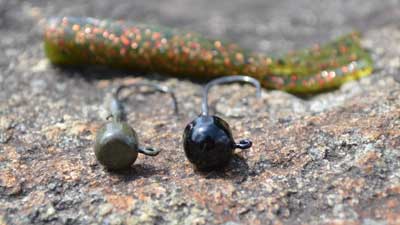
Bassmaster Elite Series angler Jeff Gustafson’s Ned Rig head is slightly heavier than those selected by most anglers. It helps his lure sink straight and fast to the bottom, where it’s more likely to remain. Photo by Pete M. Anderson The best Ned Rig heads are mushroom-shaped, which helps them sink straight and plug along the bottom with fewer snags. They also have a light-wire hook, which doesn’t require much effort to set solidly. That’s a benefit when using a light-weight line, an essential component of finesse presentations.
Gustafson is particular about the weight of his Ned Rig head. While the general rule states to use the lightest one that wind, current, and depth allow, they are always slightly heavier than needed. As a result, they help him cast farther, and his rig quickly reaches the bottom, where it's more likely to remain.
Gustafson fishes with G-Loomis' NRX+ Ned Rig rod. It's 6-feet, 10-inches long and has a medium-light power and fast action, meaning it only flexes near its tip. Casting or fishing vertical works well, and it can easily move lures and set hooks in deep water. He advises stepping up to G-Loomis' NRX+ 852S Jig Worm Rod if big fish are the target. It's 3 inches longer, has a medium power, and can handle lures up to 3/8 ounces, compared to the former’s 5/16-ounce limit.
Gustafson keeps his line and leader choice simple. His main line is always 10-pound test Power Pro braided line. Then, he ties in several feet of 10-pound test fluorocarbon as a leader. That gives him extra protection, especially when fishing around home, where there are plenty of fish with teeth. "Up North, you're catching many fish, so I go with ten and avoid issues, cut my losses," he said. But elsewhere, when the water is clear or the bite tough, he switches to an 8-pound test leader.
BassResource may receive a portion of revenues if you make a purchase using a link above.


